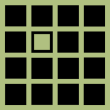UCL School of Slavonic and East European Studies, University College London, 7th Annual International Postgraduate Conference
Inclusion Exclusion
12:00 – 1:30: Panel A2: Philanthropy
Risto Karajkov (University of Bologna): ‘The case of aid and south-east Europe’
Before the fall of the Berlin Wall in 1989 quite a few of the countries of the former communist block, such as Yugoslavia and Romania, were donor countries (mostly to Africa)- an image that they actively promoted both in international relations and home affairs. With the beginning of transition their profile of donor countries abruptly disappeared, unlike their economic circumstance which took a more gradual sinking trajectory. They were excluded from the group of donors and became recipients. This came about due the rapid interest on the part of the true global donors, the OECD countries, in this part of the world that was opening. What were the major determinants, features, and outcomes of this process?
There is an intense debate ongoing at EU level to include into the pre-accession aid package (IPF instrument) the countries from the Southeast Europe (SEE) that have the status of potential candidates, together with countries enjoying a full candidate status, such as Bulgaria, Romania and Turkey. At present the former are not part of this aid deal and largely excluded from the most generous line of EU assistance. A few influential think tanks have argued that both groups of countries should be eligible for the preaccession funds, especially in view of the fact that the step from a potential candidate to full candidate is a matter of a political decision. What is the logic of inclusion & exclusion in the EU aid strategy vis-à-vis the SEE and how does it impact the developmental prospects of the countries concerned?
A principle very pronounced in the US foreign aid approach (with the current administration) but also a rule of more general application is to exclude from foreign aid countries that are not respecting the democratic norm. This principle had undergone different stadiums in the past 3-4 decades and its application has always been inconsistent, as other foreign policy interests often outweigh the pure desire to promote democracy. Access to aid for the countries from the region has often been conditioned and they were respectively included or excluded from it on account of not meeting certain democratic criteria. And this was a practice that could be quite anachronistic at times.
Just as one example, the politically controversial "oil for democracy" project of the EU that gave free oil for winter heating to opposition municipalities in Serbia at a time of complete UN embargo against the country. What is the dynamic of the processes of exclusion and inclusion in this regard and their possible outcomes?
At less political and more operational level aid is often tied and conditioned. These are some of the major issues confronting it today, also globally. Ties are designed to work to the benefit of the donor countries by tying the aid delivery to domestic companies, experts, implementers. This subsequently excludes from the game operators from the recipient country and substantially reduces the amount of the so called "real aid", the real aid that the beneficiary will get.
Different conditions imposed with aid - aid conditionalities, declaratively aim at structural improvements on the part of the beneficiary, but often they also have into account the commercial interests of the donor country. At the same time smaller countries are compelled to accept this kind of deals unless they want to be excluded from the larger picture.
And last but not the least, public in recipient countries is largely excluded from the aid related interaction and is largely incognizant of these processes, as they can often be too technical and insufficiently well reported on.
In short, the paper would explore the case of aid to the SEE over the past decade, its politics and reality, the processes of exclusion and inclusion it creates and the wider impact thereof.




